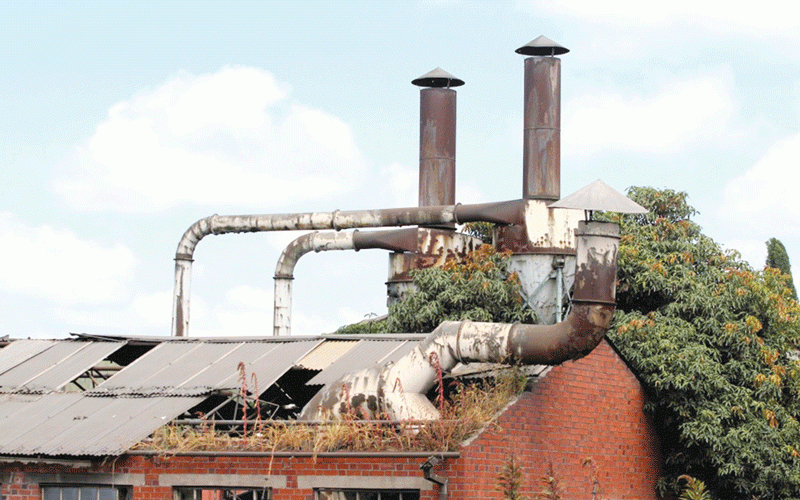
SMALL-SCALE gold miners will now receive a 5% incentive for every 500 grammes of gold delivered to Fidelity Gold Refinery, as part of the government’s strategy to ramp up annual gold deliveries to 40 tonnes. This move comes on the back of record-high gold prices, which authorities are eager to capitalise on. In the following interview, Zimbabwe Miners Federation (ZMF) chief executive officer Wellington Takavarasha (WT) speaks to our business reporter Lee Musaidzi (LM) on how small-scale miners plan to take advantage of these favourable market conditions.
LM: How does the Zimbabwe Miners Federation plan to complement government efforts in scaling up gold production in the second quarter and for the rest of the year?
WT: The Zimbabwe Miners Federation (ZMF) is taking a multi-faceted approach to complement government efforts in scaling up gold production. Their initiatives include:
Increasing gold output: Targeting to produce over four tonnes of gold per year, with a focus on small-scale miners.
Advocacy and collaborative issues: Advocating for policies that are palatable to artisanal and small-scale miners’ operations, ie the formalisation and regularisation of the sector. Working closely with government arms that have mining legislative issues, i.e., local government (Rural District Councils) Environment Management Agency (Ema) and the Ministry of Mines and Mining Development, so that the charges and levies are commensurate to the small-scale miners.
Leveraging favourable market prices: Capitalising on high gold prices to boost production and return on investment.
Sustainable mining practices: Encouraging environmentally responsible mining practices to ensure long-term sustainability.
These initiatives demonstrate ZMF's commitment to supporting the growth and development of Zimbabwe's gold mining industry
- Disgruntled chrome miners meet govt over poor prices
- Small scale miners call for gemstone trade liberalisation
- Govt blocks small-scale miners from lithium fields
- ‘Govt to regulate artisanal miners’
Keep Reading
To meet and relay issues and concerns of the ASM sector to the Ministry of Mines and Mining Development ASM desk regularly monthly
LM: Describe the performance of the small-scale miners in the first quarter?
WT: Artisanal and small-scale miners produced 65% of the total 13,8 tonnes in the first quarter, showing a significant delivery. This trend has been going on since 2017.
The average monthly delivery in the first quarter was two tonnes. The government has implemented initiatives to support artisanal small-scale, including funding facilities such as the 5% gold incentive for every 20-kilogramme tranche delivered. The incentive has now been scaled down to 5% for every 500 grammes delivered; that is widening the bracket.
LM: How is ZMF taking advantage of record prices?
WT: Small-scale miners in Zimbabwe are taking advantage of the surge in gold prices by increasing their production and deliveries. Here are some key points:
Increased gold deliveries: Small-scale miners have significantly contributed to the country's gold output, accounting for about 65% of the national gold output. In the first quarter of 2025, gold deliveries soared by 40,6%, driven by increased mining activity, prompt payments, and strong gold prices.
Higher income: With the current high gold prices on the international market, small-scale producers have benefited from increased production and return on investment. This has boosted their income and improved their livelihoods.
Overall, small-scale miners are capitalising on the favourable market conditions to increase their production and income, while the government and other stakeholders work to address the challenges and promote sustainable practices in the sector.
ZMF has set miners to deliver gold in syndicates/associations so that they also benefit from the 5% gold incentive for every 500 grammes delivered.
LM: What are the challenges faced by the sector?
WT: Artisinal and small-scale miners in Zimbabwe face several challenges that hinder their productivity and profitability. Here are some of the key challenges and efforts made by the ZMF to address them:
Challenges faced by artisanal and small-scale miners:
Limited access to finance: Artisanal and small-scale miners struggle to access funding due to lack of collateral, high interest rates, and stringent loan requirements.
Inadequate equipment and technology: Artisanal and small-scale miners often use outdated, rudimentary, and inefficient equipment, which affects their productivity and profitability.
Regulatory framework: Complex and cumbersome regulations can make it difficult for artisanal and small-scale miners to operate legally and efficiently.
Environmental concerns: Artisanal and small-scale miners often face challenges in implementing environmentally friendly practices due to lack of knowledge, resources, and support.
Market access: Artisanal and small-scale miners may struggle to access markets and get fair prices as they operate from remote places.
Efforts by ZMF:
Lobbying for financial support: ZMF has lobbied for the establishment of a dedicated fund to support artisanal and small-scale miners, such as the US$40 million gold development initiative fund (GDIF) administered by Fidelity Gold Refinery;
Lobbying for the US$10 million facility administered by Zimbabwe Mining Development Corporation (ZMDC);
Advocating for Regulatory Reforms: ZMF has advocated for simpler and more streamlined regulations that cater to the needs of artisanal and small-scale miners making it easier for them to operate legally;
Promoting sustainable practices: ZMF has promoted environmentally friendly practices among artisanal and small-scale miners, including training programmes and access to cleaner technologies;
Capacity building: ZMF in conjunction with the ministry of Mines and Mining Development, the chief government mining engineer’s department, and the Zimbabwe School of Mines, has provided training and capacity-building programmes for artisanal and small-scale miners to improve their skills, sustainable mining knowledge, and productivity;
Market access: ZMF has worked to improve market access for artisanal and small-scale miners, including negotiating better prices and linking them with buyers.
By addressing these challenges, ZMF aims to support the growth and development of the artisanal and small-scale miners sector, which is crucial for Zimbabwe's economic development and poverty reduction.
LM: Are miners getting paid timeously?
WT: The delay in payments is now water under the bridge as miners get prompt payments. Miners' payments from Fidelity Gold Refinery have improved significantly, encouraging gold deliveries. Fidelity Gold Refinery’ cash payments have vastly improved, allowing miners to reinvest the money into mining on time.
Recent Payment Issues? In the past, Fidelity Gold Refinery faced challenges with delayed payments for up to three weeks, which almost threatened gold deliveries.
LM: Is the increase in export retention affecting the artisanal and small-scale miners sector?
WT: Most small-scale miners sell directly to Fidelity Gold Refinery and are not necessarily affected by the retention policy.
LM: How are the small-scale miners being integrated into the mainstream economy?
WT: Small-scale miners in Zimbabwe are integrated into the mainstream economy through various channels:
Gold production: Small-scale miners contribute significantly to Zimbabwe's gold production, with deliveries reaching record highs in recent years. Artisanal and small-scale miners producing 65% of the total gold production from the year 2017 to current
Formalisation efforts: The government and organisations such as the ZMF are working to formalise small-scale mining, which can help increase government revenue and improve working conditions for miners.
Fidelity Gold Refinery: Small-scale miners can sell their gold to Fidelity Gold Refinery, which provides a formal market for their produce.
Economic benefits: Small-scale mining provides employment and income for thousands of people in Zimbabwe, contributing to the country's economic development.
Challenges and opportunities: Despite challenges like limited access to finance and equipment, small-scale mining has significant growth potential, which can be harnessed through targeted support and formalisation efforts.
LM: Anticipated total production for 2025?
WT: 30 tonnes by the artisanal and small-scale miners sector alone.











